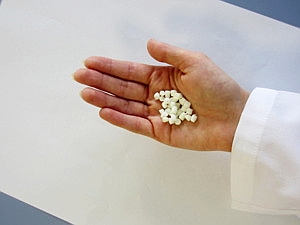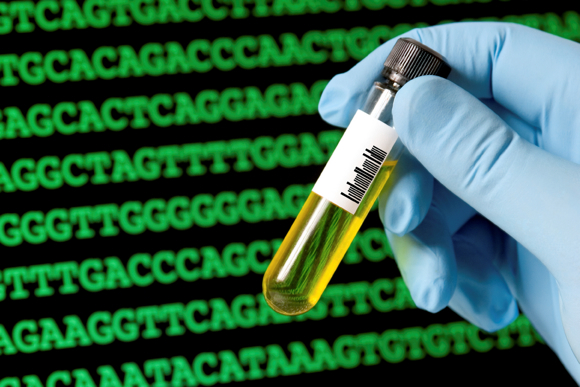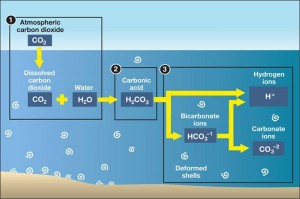It was a longer hiatus than anticipated but I’m back to provide you with the headlines that caught my eye over the last two weeks. They are:
- Should We Be Cloning Extinct Animals – A Mammoth’s Tale;
- Fracking Fluid – Colorado Governor’s Latest Cocktail;
- Genomics X Prize Challenge Has Only Two Teams in the Competition;
- Will Hydrogen Pellets Power Your Car in the Future?
- New Carbon Capture Technology May Stop Ocean Acidification.
Mammoth Find Yields Preserved Blood and Muscle Tissue
Siberia has yielded a number of recent mammoth finds that I’ve reported on in the past but this latest preserved 10,000 year-old female adult has given Russian and Korean scientists well preserved blood and muscle tissue. Found on the Lyakhovsky Islands off the northeastern coast of Russia, the mammoth appears to have been trapped in the ice and although the upper part of the corpse had been scavenged, the remainder became entombed. When the scientists broke through to the carcass what remained was so well preserved that they believe it will yield enough DNA material to potentially bring back the species. The real question is although we have the technology to do cloning should we be performing this for animals that died out 10,000 years ago? Shades of an Ice Age version of Jurassic Park at your local zoo or theme park.
Colorado’s Governor Drinks the Fracking KoolAid and Lives to Tell About It
To show his constituents just how safe hydraulic fracturing is, Colorado’s John Hickenlooper recently claimed to reporters that he and others had ritually drunk a glass of fracking fluid produced by the oilfield service company, Haliburton.
I’m not sure what the governor actually drank but fracking fluid components remain a closely guarded secret for most oil companies. From analysis of fracking fluid discharges, however, we know that these fluids typically consist of:
- 90% water
- 8-9% sand
- 1-2% a combination of 750 compounds which include swimming pool cleaner acids, salt, automotive antifreeze, soil conditioners, laundry detergent, disinfectants used to sterilize medical and dental equipment, and much more.
For a comprehensive list of what could be in your fracking fluid cocktail go to Wikipedia. As for the governor, he told the U.S. Senate Committee on Energy and Natural Resources, “You can drink it. We did drink it around the table, almost rituallike, in a funny way……it was a demonstration. … they’ve invested millions of dollars in what is a benign fluid in every sense.”
Considering the 8 to 9% sand, I would say the governor’s cocktail was pretty gritty, sort of like a glass of Metamucil. I wonder if it had the same effect?
Here’s an X Prize that Has Scared Off Most of the Competition
The Archon Genomics X Prize was first announced in October 2006. The goal – to drive down the cost of DNA sequencing. Teams were challenged to sequence 100 genomes in 10 days at a cost of less than $10,000 per genome. Originally eight companies entered but six dropped out while throughout the decade the cost of sequencing dramatically dropped to as little as $5,000 per genome. The accuracy demanded seemed to be the Achilles Heel for the six who chose not to continue the quest.
So the authors of the challenge decided to redraft the prize and launched again in October 2011. The rules extended the time from 10 to 30 days but at the same time reduced the sequencing cost to $1,000 per genome. A new wrinkle asked the competitors to focus on mapping the genes of centenarians, people who were 100 years old.
The current offer is $10 million US for the prize. The two teams remaining in the running. are Ion Torrent, led by Dr. Jonathan Rothberg, and the Wyss Institute, led by Dr. George Church. If either team succeeds it is anticipated that what they produce will define the industry standard for DNA sequencing going forward.
British Company Sees Hydrogen as the Fuel of the Future for Cars
Cella Energy is based in Oxford in the UK and it has a secret, plastic-looking pellets that when heated to 100 Celsius (212 Fahrenheit) release hydrogen which is used to power a fuel cell. Cella hopes by between 2015 and 2017 to roll out its first affordable car using these revolutionary hydrogen pellets (see image below).
The secret to the pellets is that they act like a fluid and can be pumped into a car just like gasoline. The pellets are easy to store requiring no fancy high-pressure tanks or cryogenics to keep the hydrogen stable.
New Method for Capturing CO2 May Yield Hydrogen Fuel and De-Acidify the Oceans
Scientists at Lawrence Livermore National Laboratory in California announced in May that they have discovered a way to remove and sequester CO2 with the added benefit of generating hydrogen and alkaline byproducts. The technology does not require complex mechanisms or processes to achieve CO2 capture. It produces an electrolyte that absorbs atmospheric CO2 while producing a bicarbonate similar to the antacid you may take for indigestion. The bicarbonate can be used to neutralize ocean acidity, currently a byproduct of increasing atmospheric CO2 (for an explanation see illustration below).
Greg Rau, a senior scientist on the the research team states, “We not only found a way to remove and store carbon dioxide from the atmosphere while producing valuable H2, we also suggest that we can help save marine ecosystems with this new technique.”
The technique has many advantages over existing CO2 capture methods. It doesn’t require a large energy input to pull the CO2 from the air. Its byproduct hydrogen can be used as a fuel. And its other byproduct remediates the growing problem of ocean acidity that today is impacting corals, zoo-plankton and shellfish.
A Postscript
If you find a story that you feel would be a great headline for this weekly column please share it. Once again thanks for dropping by and for your many questions and comments.













